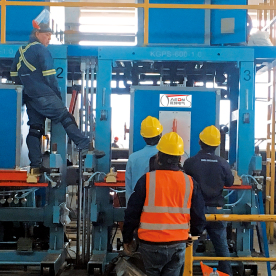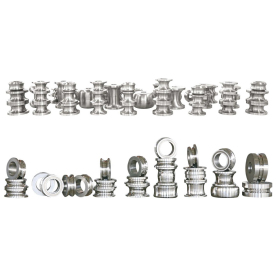[Heat-Resistant HSS Blade]Exploring the Advantages and Applications of Heat-Resistant HSS Blades in Modern Manufacturing Processes
News 2024-10-26
In the fast-evolving world of manufacturing and machining, the need for specialized cutting tools is more significant than ever. One of the most innovate developments is the Heat-Resistant High-Speed Steel (HSS) blade, which has garnered attention for its superior performance and durability in high-temperature operations. This article delves into the characteristics, advantages, and varied applications of heat-resistant HSS blades, shedding light on why they have become a staple in modern manufacturing processes.
What is Heat-Resistant HSS?

Exploring the Advantages and Applications of Heat-Resistant HSS Blades in Modern Manufacturing Processes

Exploring the Advantages and Applications of Heat-Resistant HSS Blades in Modern Manufacturing Processes
Advantages of Heat-Resistant HSS Blades:
1. **Thermal Stability**: The most prominent advantage of heat-resistant HSS blades is their exceptional thermal stability. They can withstand high temperatures up to 600°C (1112°F) without losing hardness. This property is crucial in high-speed machining operations where friction generates substantial heat, enabling manufacturers to make more precise cuts without the risk of blade degradation.
2. **Extended Tool Life**: Due to their high-temperature resistance and durability, these blades often have a significantly longer lifespan than standard HSS blades. This extended tool life means fewer tool replacements, reducing downtime, maintenance costs, and ultimately leading to increased productivity. In industries where efficiency is paramount, this aspect alone can result in substantial cost savings.
3. **High Cutting Speeds**: Heat-resistant HSS blades enable machining at higher cutting speeds due to their ability to maintain sharpness even in heated conditions. This translates to shorter cycle times, allowing manufacturers to increase their output without compromising the quality of the finished product.
4. **Versatility**: These blades can be utilized across a variety of materials, including stainless steels, high-temperature alloys, and more. This versatility makes them an ideal choice for companies engaged in diverse manufacturing projects, allowing for one type of tool to serve multiple purposes.
5. **Improved Cutting Precision**: Heat-resistant HSS blades are designed for precision machining, ensuring that they can create consistently accurate cuts across various materials. This precision is critical in sectors such as aerospace and automotive manufacturing, where tolerances are minimal and quality control is strict.
Applications in Modern Manufacturing:
With these extensive advantages, heat-resistant HSS blades find applications in numerous sectors.
Aerospace Sector
In the aerospace industry, precision and reliability are non-negotiable. Heat-resistant HSS blades excel in machining components made from titanium and other high-strength materials that require tight tolerances. Their ability to sustain high cutting speeds while maintaining performance metrics makes them invaluable in this field.

Exploring the Advantages and Applications of Heat-Resistant HSS Blades in Modern Manufacturing Processes
The automotive industry demands efficient and reliable manufacturing processes. Heat-resistant HSS blades facilitate the machining of engine components, transmission parts, and other vital automotive elements. This robust performance is essential for meeting the stringent quality and durability standards required in modern vehicles.
Metalworking and Tool Making
In metalworking and tool making, the repetitive strain of high-speed cutting can cause significant wear on standard blades. The heat-resistant HSS blades provide the necessary edge retention and thermal stability, allowing machinists to create intricate designs and shapes while minimizing the need for frequent tool changes.
Conclusion
In the realm of high-speed machining, heat-resistant HSS blades represent a remarkable advancement in cutting tool technology. Their thermal stability, extended tool life, and versatility make them indispensable for manufacturers aiming to enhance productivity and maintain high production standards. As industries continue to evolve and demand more from their tools, the adaptability and efficiency of heat-resistant HSS blades will ensure their place at the forefront of machining innovation. Whether it’s aerospace, automotive, or general metalworking, these blades are an exemplary tool that embodies the future of precision manufacturing. The journey of technological enhancement continues, and heat-resistant HSS blades play a crucial role in that transformative narrative.
